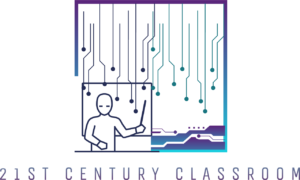In today’s competitive landscape, growth hacking has emerged as a game-changing approach for SaaS companies seeking rapid and sustainable expansion. With unique strategies tailored to the SaaS model, growth hacking offers innovative ways to attract, engage, and retain users. In this article, we’ll explore essential growth hacking strategies that can help SaaS companies excel in their journey.
1. Understanding Growth Hacking in the SaaS Context:
Growth hacking for SaaS involves leveraging unconventional marketing methods, data-driven decision-making, and iterative experimentation to drive rapid user and revenue growth. This approach stands apart from traditional marketing by its focus on scalability and adaptability.
2. Identifying Your Ideal Customer Profile (ICP):
Defining your Ideal Customer Profile (ICP) is pivotal for targeting the right audience. By conducting thorough customer research, analyzing demographics, pain points, and behaviors, SaaS companies can tailor their offerings and messaging to address specific customer needs effectively.
3. Leveraging Data-Driven Decision Making:
Data is the backbone of growth hacking. Analyzing key metrics such as Customer Acquisition Cost (CAC), Customer Lifetime Value (LTV), and churn rate provides insights into the effectiveness of your strategies. This data-driven approach enables companies to optimize their marketing efforts for maximum impact.
4. User Onboarding Optimization:
First impressions matter. Streamlining user onboarding experiences with personalized tutorials, interactive guides, and real-time support can significantly enhance user satisfaction and reduce churn rates. A seamless onboarding process sets the tone for a positive user experience.
5. Conversion Rate Optimization (CRO) Techniques:
CRO is about maximizing the value of your existing traffic. Implementing A/B testing on landing pages, pricing pages, and CTAs can yield insights into what resonates with users, leading to increased conversions and revenue.
6. Viral Loops and Referral Programs:
Viral loops and referral programs tap into the power of word-of-mouth marketing. By incentivizing users to refer others, SaaS companies can unlock exponential growth. Dropbox’s early success with its referral program is a prime example.
7. Product-Led Growth (PLG) Strategies:
In the product-led growth model, the product itself becomes the primary driver of acquisition and retention. Offering freemium models or trial versions allows users to experience value before committing. In-app education and feature discovery further nurture user engagement.
8. Harnessing Content Marketing for SaaS Growth:
Creating high-quality, value-driven content not only establishes your authority in the industry but also attracts organic traffic. By addressing user pain points and staying updated on industry trends, SaaS companies can build a loyal audience.
9. Building Strategic Partnerships:
Strategic partnerships, integrations, and collaborations can broaden your reach and offer unique value to customers. By identifying compatible partners and fostering mutually beneficial relationships, SaaS companies can tap into new markets.
10. Retention and Customer Success Strategies:
Retention is as crucial as acquisition. Providing proactive customer support, continuous engagement, and showcasing success stories helps build trust and loyalty. Happy customers not only stick around but also become advocates.
11. Scaling Your Growth Hacking Efforts:
As SaaS companies grow, maintaining a balance between scaling efforts and delivering quality becomes vital. Consistently iterating on growth strategies, adapting to changing market dynamics, and staying customer-focused are keys to sustainable expansion.
Takeaway
Growth hacking for SaaS companies is an ever-evolving journey that requires creativity, adaptability, and a deep understanding of user needs. By implementing these strategies, SaaS businesses can forge a path towards skyrocketing success in an increasingly competitive landscape.

